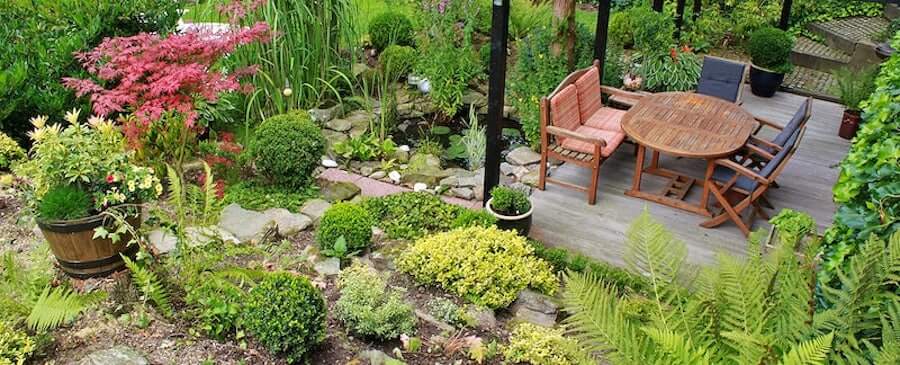A backyard landscape may already be beautiful in a natural way. But you can maximize its appeal by designing it with your creativity.
If you don’t know where to start, we suggest the best backyard landscaping ideas. It’s time to impress your guests and all the passers-by.
Table of Contents
Backyard Landscaping Ideas
Your landscaping design should match your home’s style. Moreover, it should suit your lifestyle and encourage you to spend more time in your garden.
So, let’s check the following ideas for inspiration to improve your property.
Mountains of plants
What do you think about leaving circular sections or curved walks about the lawn? It’s a terrific idea to incorporate flowers in the backyard design in this way.
Be sure to note how you positioned taller plants in the middle of these sections and bordered them with brilliant flowers closer to the lawn. The flowers will form a mountainous effect and direct the attention upward.
Instead of keeping a few species, you can experiment with new plant varieties by creating separate but clearly defined areas on the lawn.
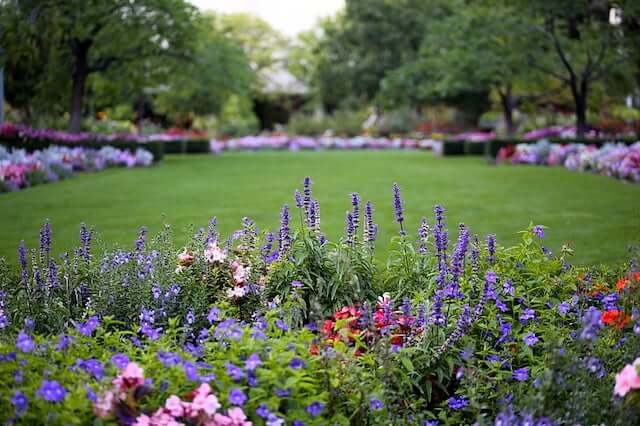
Paths across the yard
No one wants to step on their gorgeous lawn. So why don’t you make paths across your backyard?
If you love it, the ideas below will help. We mention both pros and cons so that you can make an informed decision.
- Mulch
Mulch walkways are a brilliant choice for building a low-cost garden path because they look natural and appealing and help with drainage problems.
Moreover, mulch garden pathways are a great, simple, and reasonably priced method to construct a pathway. You only need to lay down some landscape fabric and cover it with mulch.
You have to replace mulch every year, though. Also, until it gets a little worn down, it is difficult to flip over when you lay down a new batch.
Besides that, you always have to pull weeds because they appear to believe the mulch on your garden path is the best place to form.
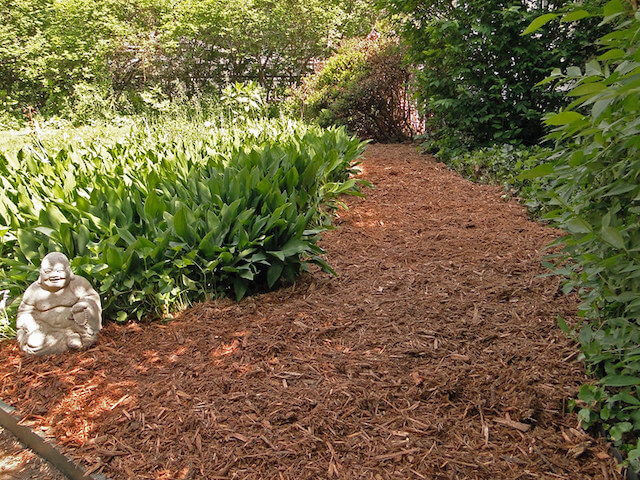
- Gravel
Another alternative on our list of recommendations for garden paths is gravel.
You can easily mold it into whatever form you like, making it a perfect choice for almost any type of garden.
Gravel paths are similarly simple to install as mulch. But because you need to put up some barriers along the path to hold the gravel in place, the installation requires a little more labor than mulch.
Gravel has a few extra benefits over mulch. For example, you don’t have to replace it frequently. Moreover, weeds will find it harder to thrive.
Despite the advantages, some homeowners still have some unpleasant experiences with gravel pathways.
They claim that the rough texture discourages them from walking barefoot across their gardens.
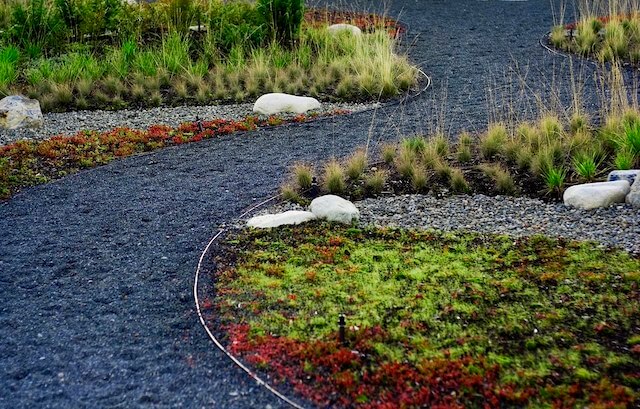
- Grass
The third option on our list of best garden paths is to cover the pathway area in grass completely. Bare feet would certainly be comfortable on this walkway.
Making a grass way demands less labor than other options because you just need to bring topsoil and lay sod.
However, it changes to a different story in terms of maintenance. You have to mow, edge, and water this pathway frequently.
- Flagstone
Walkways made of flagstone are durable and low-maintenance. They are fairly adept at sliding over with carts and other items once they have settled.
Unfortunately, flagstone is not the most straightforward walkway material to install, especially after you have completed flagstone walkways and patios.
Flagstones require a lot of raising and lowering to be correctly set because they are a natural material and don’t have a consistent size and thickness.
- Brick
Bricks and flagstones have some similar qualities. They are easy to maintain and long-lasting. Yet, you can install bricks easier because they have the same thickness.
Nevertheless, your pathway will look uneven if the base material is not quite level. Bricks can be quite pricey as well.
You might also try mixing a softer material, like grass, with the bricks. It has a pleasant scent when you walk on it.
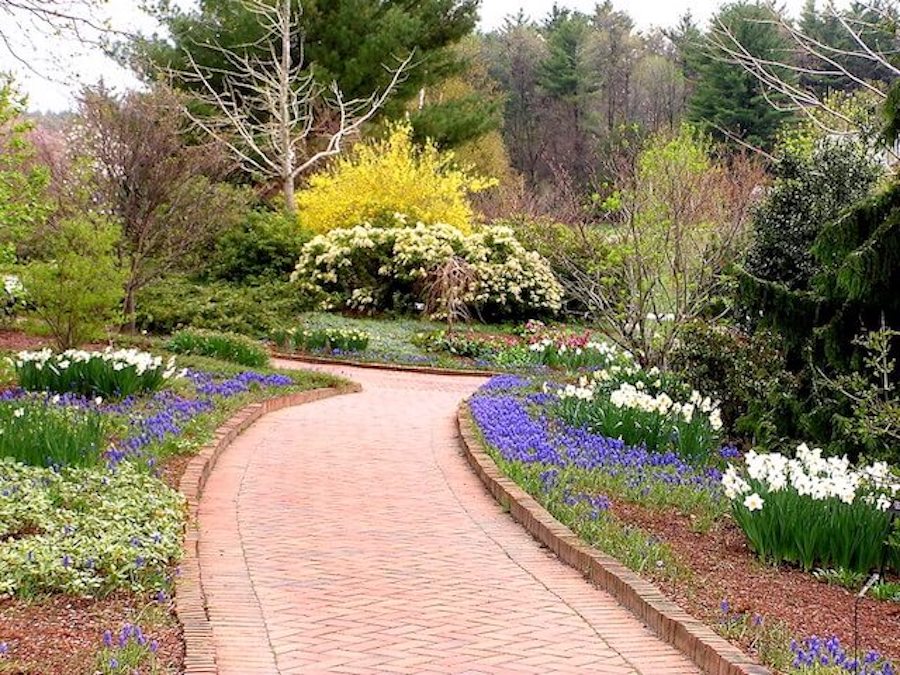
- Wood
A wood pathway is simple to roll over using a cart, pleasant for walking on, needs installation work, and doesn’t cost much.
If you use second-hand pallets to build the pathway, the cost will be much lower, and you won’t have to do much work.
The biggest disadvantage of this method is the workload of annual upkeep. If you don’t do it properly, the material will lose some of its quality and aesthetic appeal.
- Stepping-stone paths
Another popular walkway idea is to use stepping-stones, which are the quickest and simplest way to make a path.
There isn’t much digging to be done. Despite the stone’s weight, a little bit can go a long way.
You don’t have to bother leveling the stones because there is space between them. Since you can cover more ground with fewer stones, they are also less expensive.
To find out what’s accessible, check with your local quarry and landscape supplier. You can usually choose the stones you need from the pile or pallet of stones the seller has on hand if you’re making a short pathway.
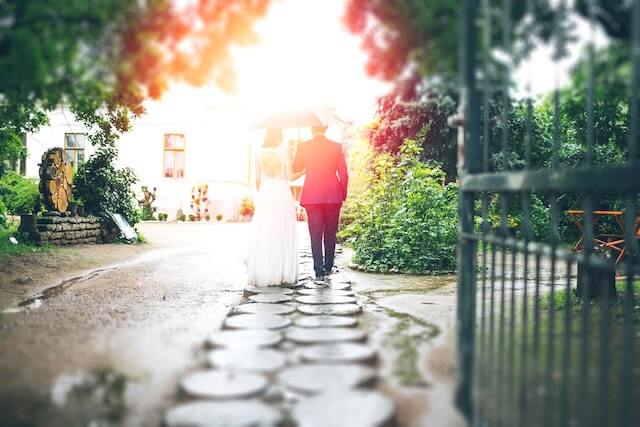
Fire pit as a centerpiece
People love to gather around the fire and talk. Nothing beats the cozy feeling of staring into a backyard fire pit, whether it’s summer or winter.
Imagine lighting the fire pit to create a fun atmosphere at a bonfire with best friends, roast marshmallows or hot dogs, or warm your hands as you share stories.
There are many styles of outdoor fire pits. You have a selection of elevated containers, cooking cauldrons, and elegant, gas-fired models. Make sure they can keep a clean, safe fire.
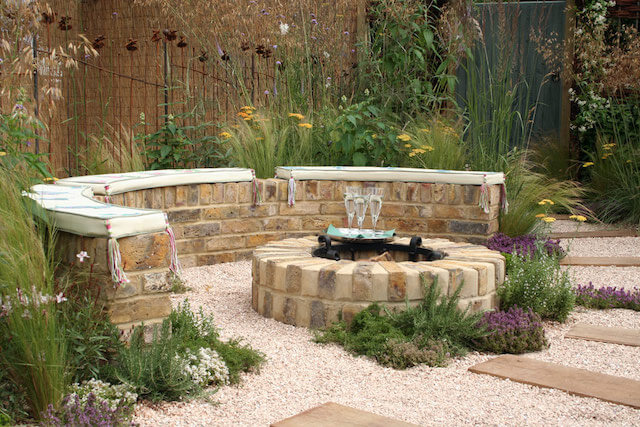
Mini-makeover
If you don’t have time or don’t like a big project, try something small, like a mini-makeover.
This idea is as simple as creating a small flower bed around your home’s exterior and edging it with bricks.
You can even find striped varieties if you’d prefer something a little different.
You’ll have a perfect fit when combining those with impatiens or other types of blossom you love.
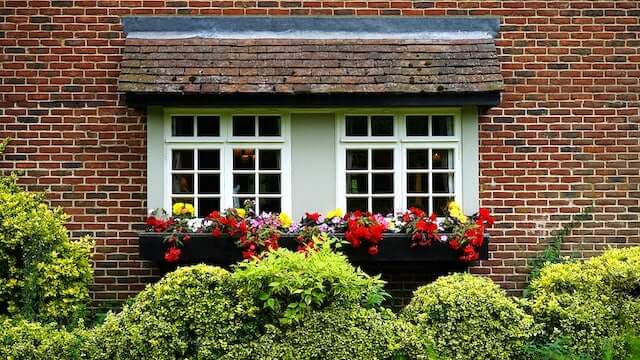
A waterfall of flowers
This lovely design is ideal for almost any kind of landscape. It looks like a flower pot spilling, with the blooms pouring out, but this look makes it attractive.
Most garden supply stores sell huge pots. The opening is on the side, with a flat bottom.
You can plant some flowers in the soil to achieve the same impression, even though you want the flowers to look like they are spilling.
A swing
You can use your backyard as an entertainment place. Add a rustic swing next to a big tree, and you won’t worry about the hot summer.
There are tons of models to choose from. Homeowners prefer wooden swings as they lend a natural touch.
They are often white or brown, but both can blend well in your landscape.
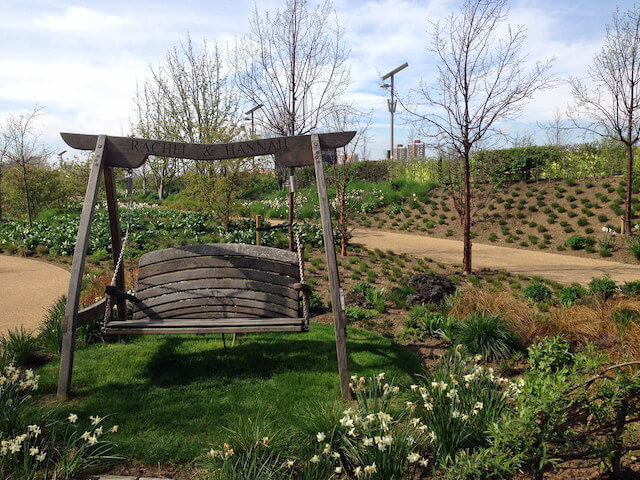
Modern patio
If your areas don’t often have rain, think about adding lush greenery or flower mounds to your landscape. They can make beautiful patios.
Native plants in small sections let you achieve the ideal backyard atmosphere without raising your water bill.
If you’re unsure of which species are indigenous to your region, contact a qualified landscaper for advice.
Remove weeds
Keeping weeds away from your garden is one of the significant concerns in most garden setups. To ensure your landscape looks precisely how you wish it to, you may need to weed daily.
Here are some things you can do to keep weeds at bay:
- Start attacking the weeds right after you notice them.
- Add biodegradable mulches, such as wood chippings or leaf mold, on top of the soil.
- Pour boiling water on the base of plants to cause instant shock and kill the weeds.
- Make an organic weed killer with baking soda to avoid harming your plants.
- If all the methods above can’t work, use weed killers, such as herbicide glyphosates.
A tree next to the patio
You can transform your backyard’s look by simply placing a big tree in every corner.
Then, put a patio, a swing, or any decoration feature next to the tree to complete the design. Believe us; this method will always work!
The key is to choose the right tree. You can choose by considering your local weather, home style, and preference.
Often, homeowners love these trees for their backyard landscapes:
- Dogwood
Your backyard is always attractive when a dogwood tree is there.
It blooms lavishly in spring, with pink and red blossoms. And in the summer, it forms a dense and luxuriant umbrella of foliage.
Before dropping their leaves to reveal stunning branching in the winter, most dogwood varieties have red foliage in the fall.
It is no surprise that this tree is one of the most well-liked flowering plants in America, given that there is a cultivar for almost every climate zone.
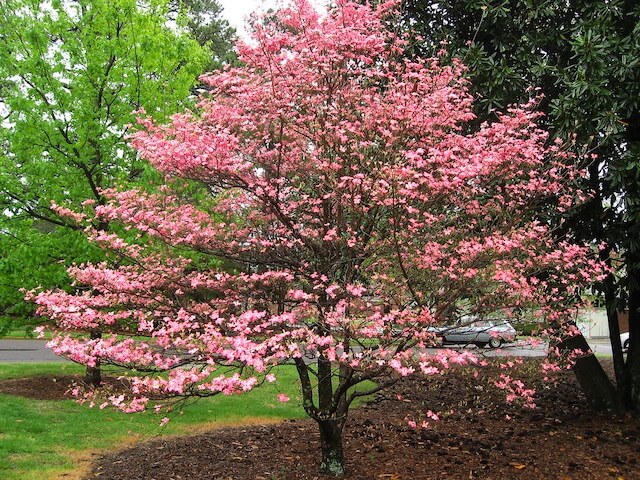
- Saucer Magnolia
The saucer magnolia is a garden show stopper since it blossoms in the spring with pink, saucer-shaped flowers.
This tree is an ornamental that thrives in Zones 4 through 9 and reaches heights of 20 to 30 feet.
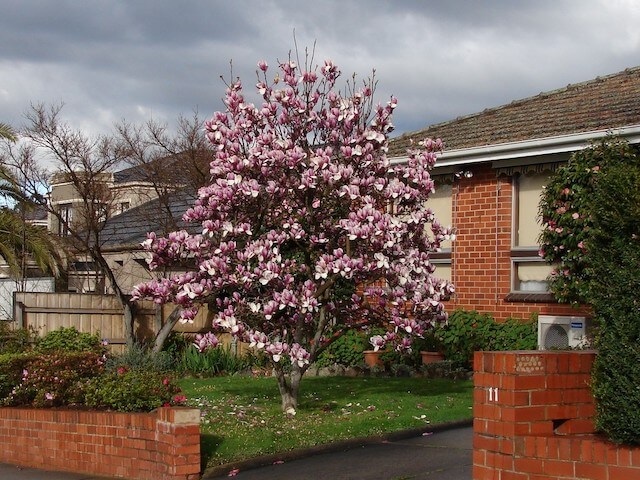
- Sugar Maple
Sugar maple is a wonderful option to give your garden some fall charm and color.
The expanding canopy of the sugar maple, which may reach heights of 60 to 75 feet, makes a vibrant display in the fall.
It is understandable why Americans love Sugar Maple trees for their yards since they can serve both decoration and share purposes.
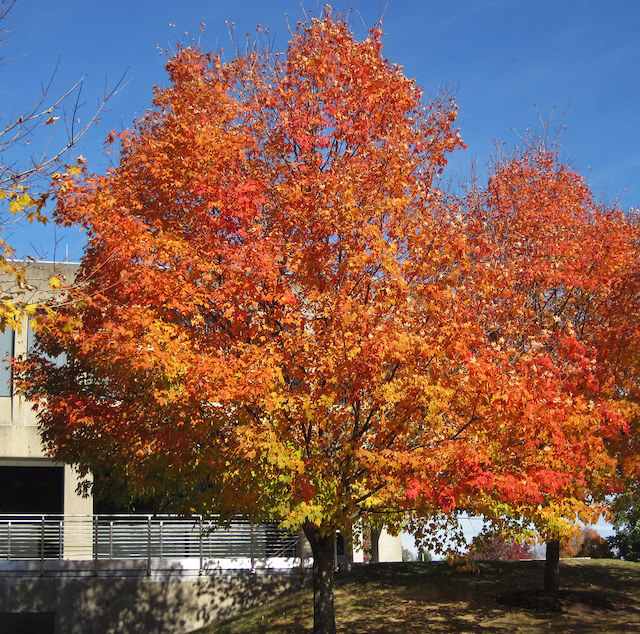
- Weeping Cherry
The weeping cherry is among the most romantic and gorgeous trees.
This beautiful tree will soon become the focal point of any garden, with its cascading branches covered in white and pink blooms in the spring.
The tree can grow to a height of 20 to 30 feet and a width of 20 to 25 feet, making it compact enough to fit virtually any backyard.
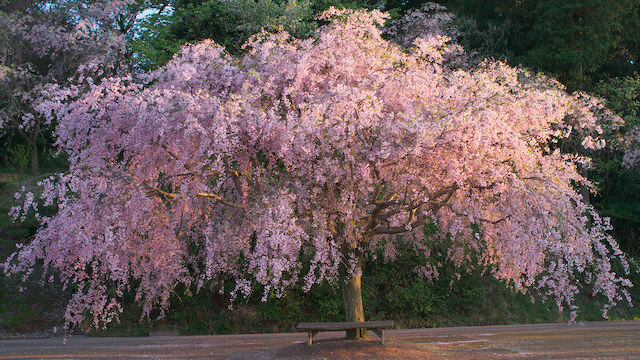
- Silver Maple
This tree will turn your garden into a shady hideaway for five years.
The silver maple gets its name from the silvery undersides of the leaves, which also give the tree a dazzling silver sheen in the wind.
Due to the extensive root system and massive trunk, you can grow the silver maple far from sidewalks and sewer lines.
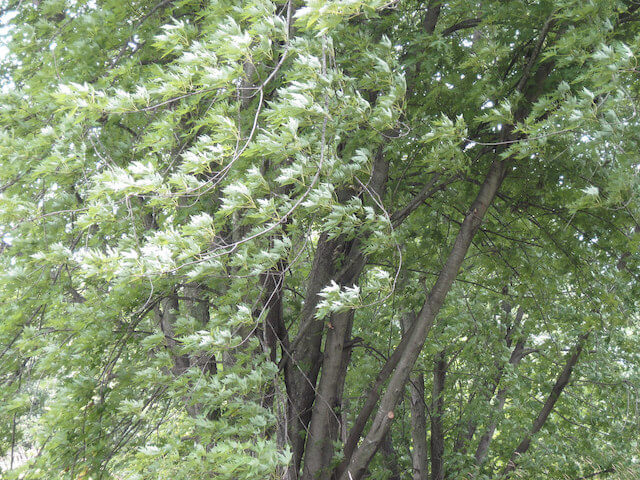
- Holly tree
There are two types of holly. The first one is the English holly, a traditional holiday holly tree characterized by its curled, sharp leaves.
The second holly variety is the American holly. These holly trees are bigger, reaching heights of around 60 feet, and have lighter-colored leaves.
If you want to grow berries on any of these holly trees—which are lovely winter bird food—you need one male tree for every one to five female trees for the berries to form.
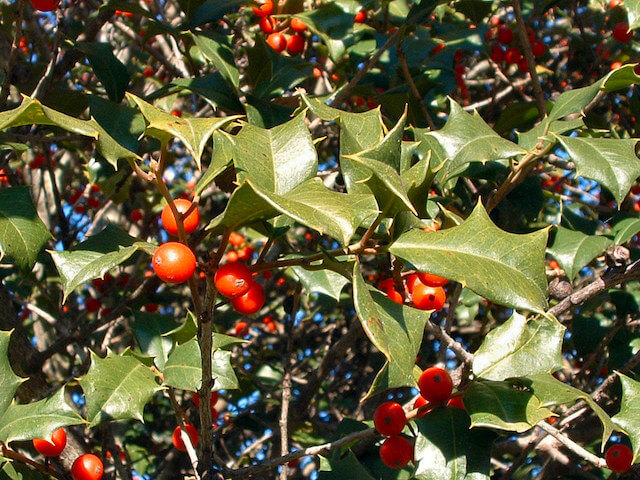
- Juniper
Juniper trees, well known as the primary ingredient of gin, are actually a valuable addition to the landscape on their own. They are a subspecies of conifer, well-known for their tolerance and hardiness.
Junipers come in various colors and can flourish in conditions where other plants struggle. Thanks to the wide variety, you can easily pick one that blends in with your landscape.
Moreover, you can prune the tree into a precise shape or let it grow naturally for a rustic appeal. Junipers also go well with many architectural designs.
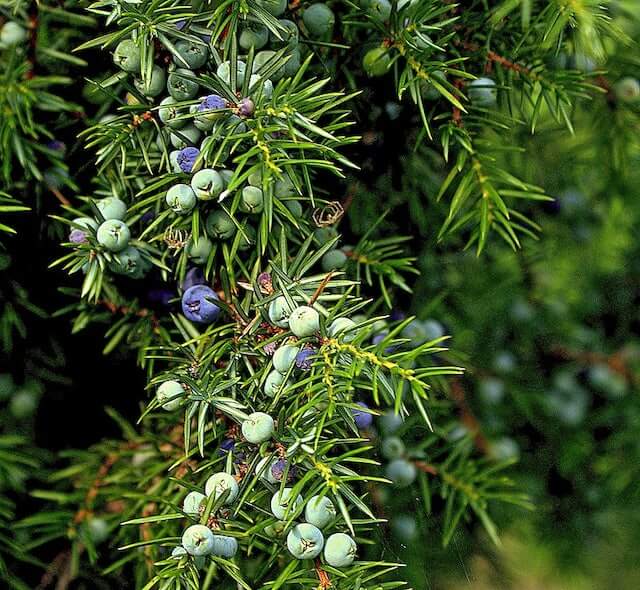
- Tulip Tree
The tulip tree acts as both a shade and ornamental tree. It bursts in tulip flowers in the spring, and in the fall, it displays striking yellow leaves.
This tree grows up to two feet or more in a year and is a fast-growing hardwood.
Moreover, homeowners love this tree because it has few pest issues and can thrive in Zones 4 to 9.
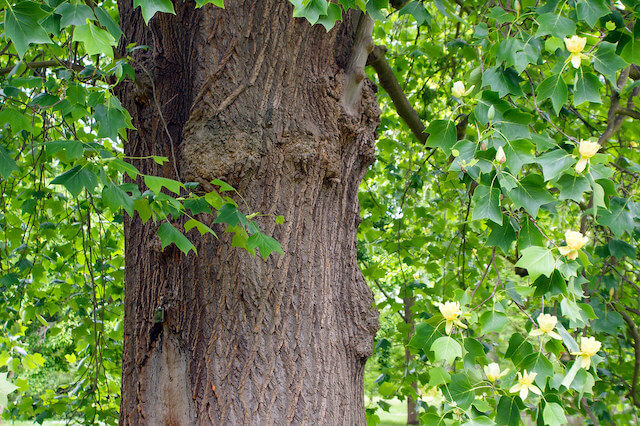
- Hemlock
Evergreen fir trees like hemlock are famous for their adaptability. The US has a wide selection to fit almost every condition.
For instance, the Eastern and Caroline hemlocks are two prominent evergreen trees for landscapes.
Plus, you will love hemlock trees for their pyramidal shape, dense, evergreen needles, and appealing berries.
The trees require protection from the dry winter, but they can tolerate shade better than most evergreens.
Hence, it’s crucial to plant in a suitable area with enough moisture, sufficient drainage, and acidic soil.
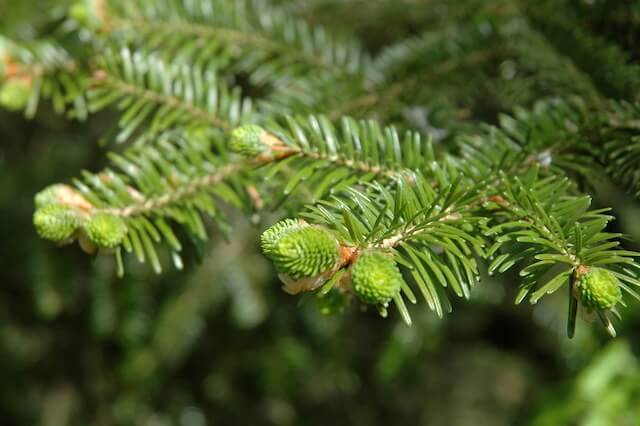
- Amelanchier
These deciduous trees, also known as Juneberries or Serviceberries, produce clusters of gorgeous white, star-shaped flowers on their softly copper-colored leaves in the spring.
In fall, the leaves then change to blazing red and bright orange.
Despite their delicate flowers, these trees are tough and can withstand damp weather and most soil types. Yet, they favor clay and sandy soil.
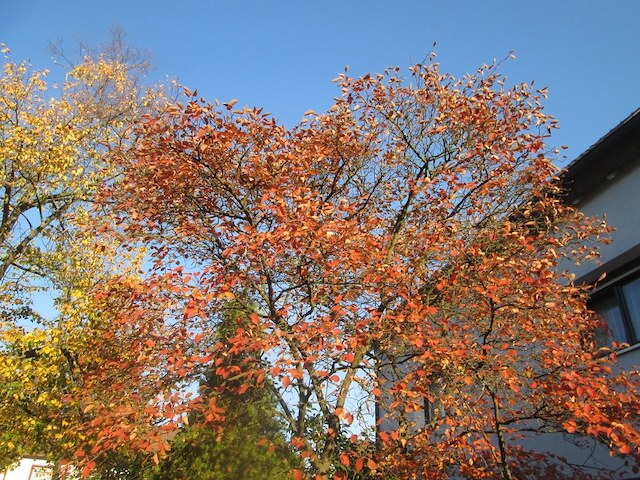
A flower-shaped garden
This idea is perfect for those who like cute style.
Try it, and your garden will be full of flowers. You can set it up by building a brick path leading to multiple circular areas to form a flower shape.
Your own room
A creative gazebo in the garden is fantastic for those who prefer to spend the summer indoors to escape from the sun’s scorching rays.
Instead of traveling around one of the planted areas, you can make a path that runs through it. After that, include tall plants around the flowers to add color and depth while they conceal a secret.
Try disguising a patio table on the opposite side as well. Doing so allows you to make a lovely little corner in the yard and achieve the privacy you desire.
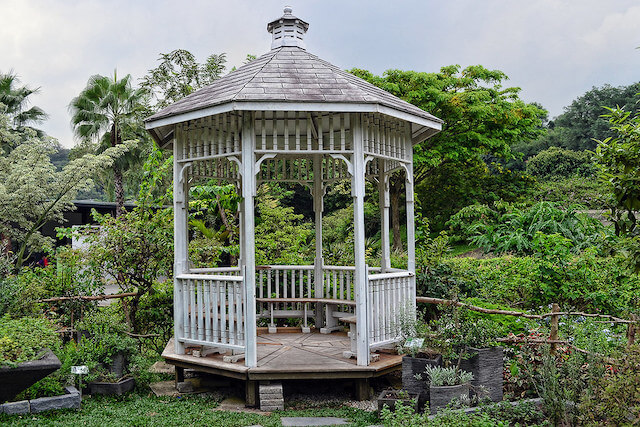
Nighttime place
Consider what you want to do in your garden when deciding what style of backyard ideas are best for you.
For example, it can all be about having fun late into the night with buddies.
The uneven rocks surrounding the route give the area a terrific DIY vibe. Meanwhile, the stones and circular bricks make it look polished.
You can have lighting into the nighttime and shade during the day by hanging lights from the bushes.
Although there are a few small planted spaces, the fireplace and chairs encircling it are the star appeal.
All these features make it a wonderful place to sit back and chat with your friends.
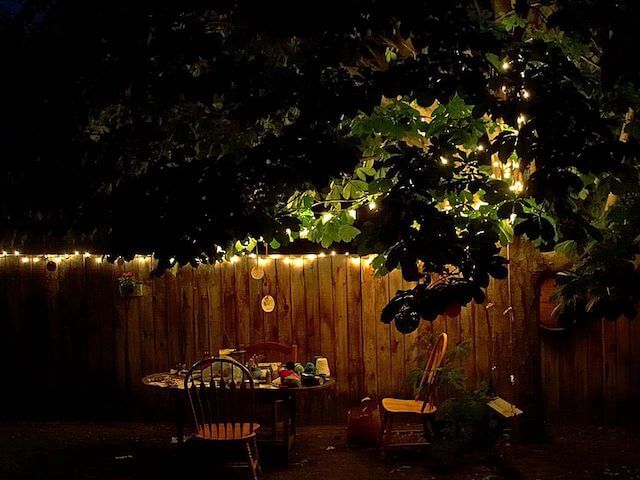
Flowing flowers
Your backyard landscape won’t be complete without flowers.
We’ve outlined the characteristics of iconic species and indicated how each adds to a landscape design.
Before we start, please note that the best options for your garden are perennial flowers, as they can live for many seasons.
- Balloon Flower
Balloon flower is popular among gardeners because they can grow it at ease.
You can also achieve the same result by giving it full sun or partial shade and organically rich soil.
Wide balloon flower varieties yield different blossom colors, such as pink, purple, blue, or white.
Their stems will grow up to two feet tall to bear balloon-bike buds, which form blossoms in July or August.
Interplanting balloon flowers with other plants makes for a charming pattern that directs the eye through a scene while serving as a centerpiece.
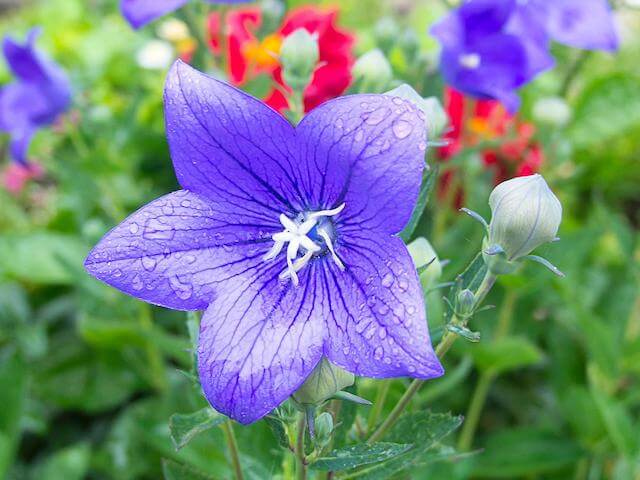
- Blazing Star
Native wildflowers like blazing stars bring pollinators to the yard. They flourish in soil that is wet, organically rich, and well-drained.
Spikes can reach four feet tall and have white, pink, or purple blooms. From July through September, this linear form has a striking effect.
Additionally, this species blooms vertically and is hardy. This trait makes it durable in vase arrangements.
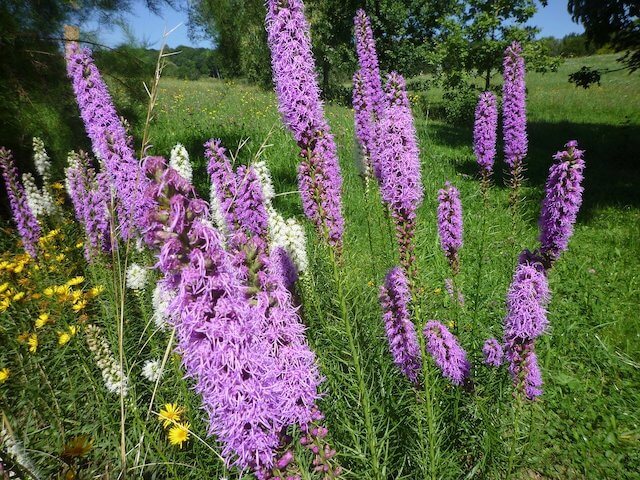
- Viola
While gardeners often grow violas as an annual, many of these species successfully overwinter due to their frost resistance.
Besides, their free-flowering nature and small size make them suitable for pot gardening.
You can have a flower festival even when only violas are growing violas. To establish a charming effect, it comes in many colors, such as lilac, white, yellow, orange, and purple.
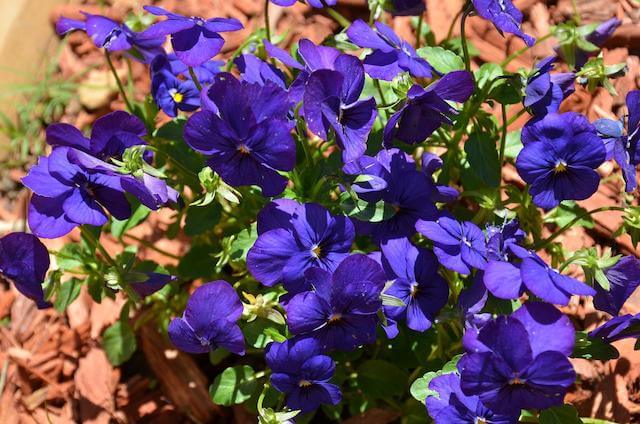
- Bugleweed
In regions with average to wet, well-drained soil and sunlight to partial shade, bugleweed is an excellent evergreen ground cover for your garden.
Varieties vary in color and have upright bloom spikes that are about six inches tall with glossy green, violet, and multicolored leaves.
Directly sow it over your daffodils and hyacinths for subtle color from May through June. You can use it near pathways and in difficult areas where nothing can grow.
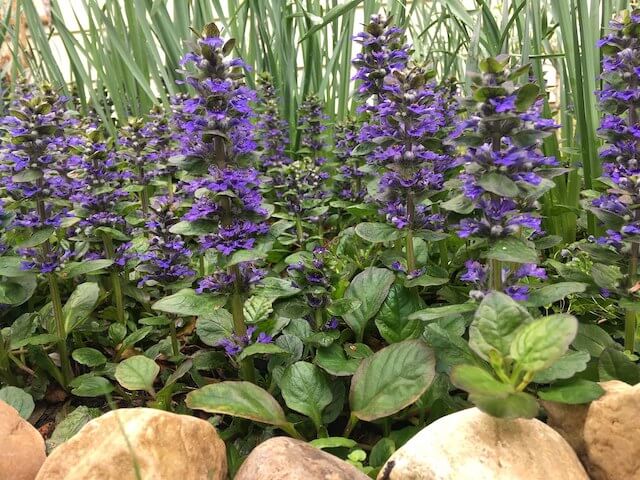
- Coneflower
Coneflower likes soil that is sandy and rich in organic matter.
Modern orange and yellow hybrids frequently fall short when compared to the native purple and its cultivars.
Coneflower often blossoms from summer through fall. You may have heard about its therapeutic properties. Some homeowners also love it for its attraction to songbirds.
Its key attribute is its ability to deliver long-lasting color. The flower looks especially lovely when planted with other plants that require the same soil, such as black-eyed Susan.
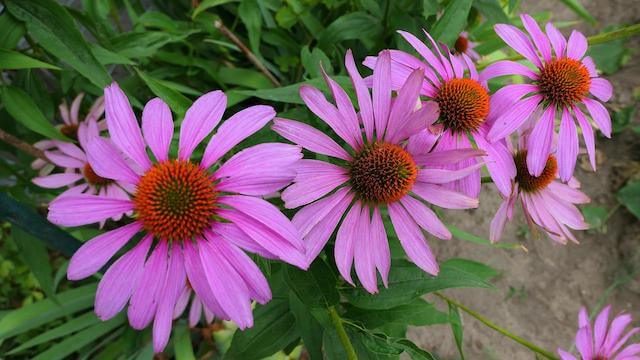
- Cranesbill Geranium
Cranesbill geranium can grow to three feet tall. It’s a wonderful filler in borders around your garden with its shrubs resting behind and its flora standing out in the front.
Because of its thick foliage, this plant can work as a cover for ugly utility meters, pipes, and other unattractive foundation devices.
Cranesbill flowers are vivid and lasting from April until the first frost. Feel free to pick your favorite colors from the pink, white, blue, and purple options.
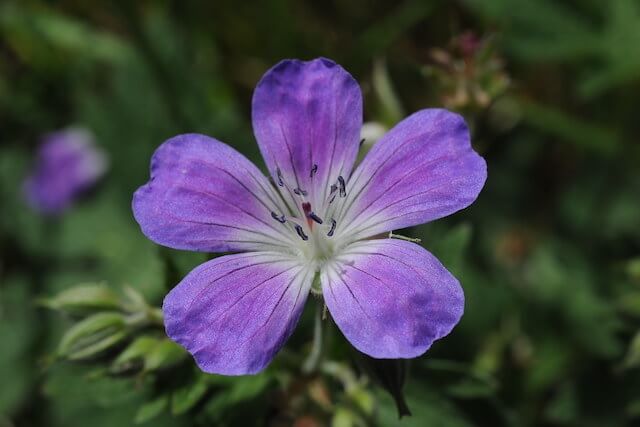
- Creeping Thyme
This culinary herb can serve two purposes: making your garden look amazing and enhancing your food’s flavor.
Plus, it produces a pleasant, minty aroma when rubbed against or stepped on.
Its small pink-purple flowers, which grow to a height of around three inches, create a dynamic carpet of color as summertime begins.
You can plant or sow the plant along pathways or at the borders. No matter where you place it, its flowers can show off its vivid color.
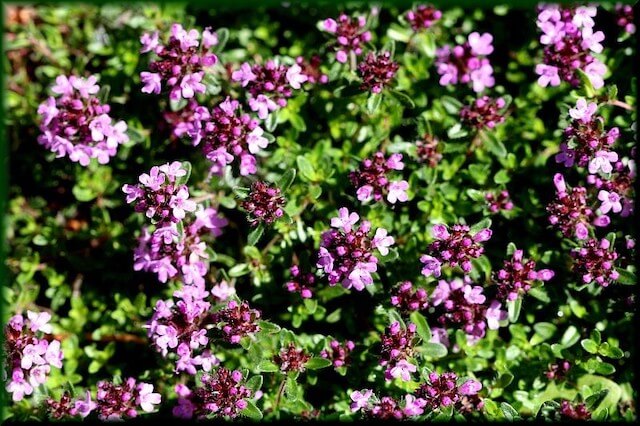
- Daylily
The daylily is a root plant with many big, angular flowers on each stem, each of which blooms for only one day.
In good soil, the plant grows tenaciously. The species comes in many colors, including yellow, white, purple, orange, pink, and red.
The beautiful blossoms and four-foot heights are the outstanding attributes of this flower.
For a constant display from spring through frost, it shines the most when paired with bloomers from different seasons.
You can use tall varieties to their greatest advantage as solitary plants or as back-of-border supports in spacious flower beds.
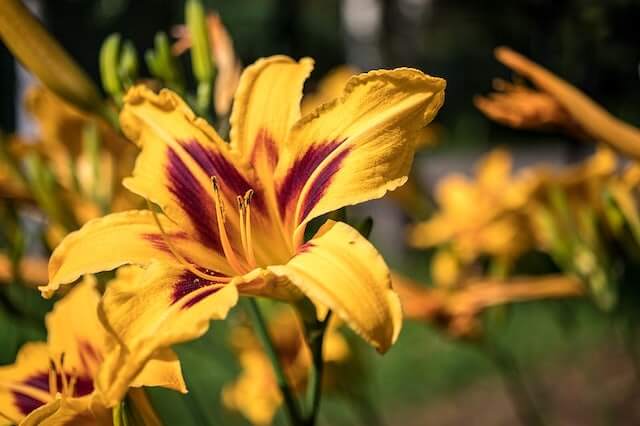
- Lavender
Lavender is a fantastic choice for both cooking and medicine. Moreover, thanks to its lovely color, you can also grow it in your garden for an adorable look.
The scent of lavender is, without a doubt, one of its best traits. Place it next to the bed and border edges to promote brushing past and the release of its offensive odor.
Homeowners like to use lavender to add a line of color or texture to the mid-story area, as it is compact and grows to a height of one to two feet.
For a harmonious contrast, think about pairing it with yellow yarrow.
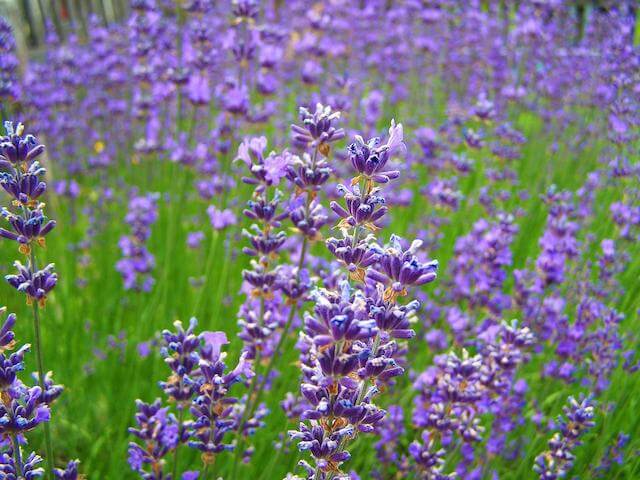
- Siberian Iris
The Siberian iris can bloom quickly in full sun to partial shade. Like other species, the plant needs well-drained and organically-rich soil.
Some cultivars reach up to four feet tall and come in different hues, including yellow, white, purple, and pink. But the blue iris is the most popular choice.
Iris produces dazzling clumps that act as a centerpiece and grow naturally to create striking drifts of hue in spring landscapes.
Some iris varieties prefer “wet feet,” which makes them ideal treatments for most problematic areas.
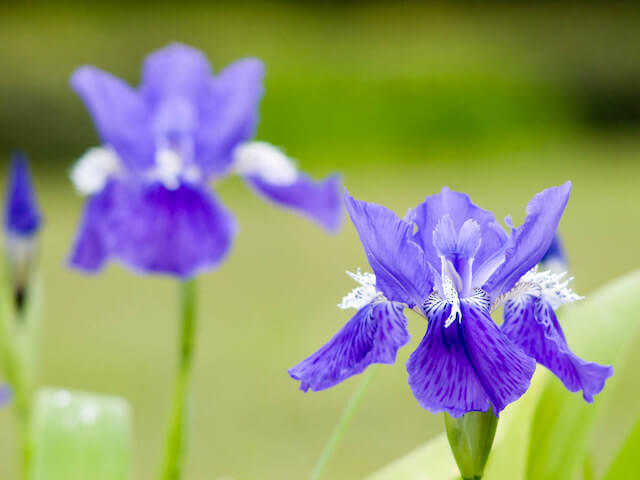
- Hellebore
The rhizomatous evergreen hellebore is famous for its ability to bloom in the garden in January and persist far into the following spring.
In your garden, the hellebore has two roles to announce the arrival of spring and to offer year-round, one-foot-tall foliage that is rich in texture.
You can use hellebore flowers as a gentle ground cover and the ideal partner for spring bulbs under deciduous trees.
Simply slip the stems of the wilting bulbs under the big leaves to conceal them.
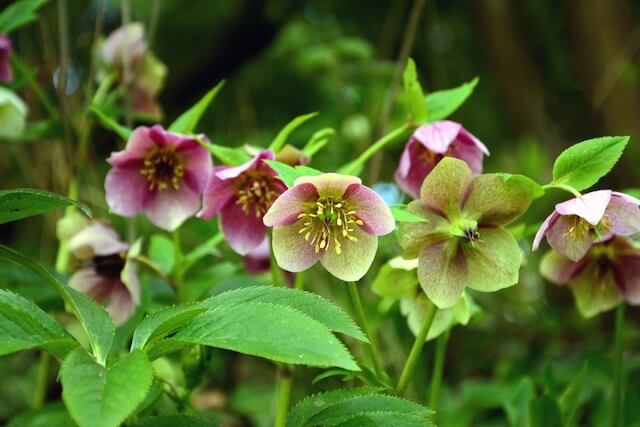
- New England Aster
New England aster makes its way in your landscape as a native plant that feeds pollinators and gives one last burst of color during the shift from summer to fall.
Once the plant starts growing, it resembles a shrub. The tiny, fluffy purple blooms constantly emerge in August and September, growing to six feet tall.
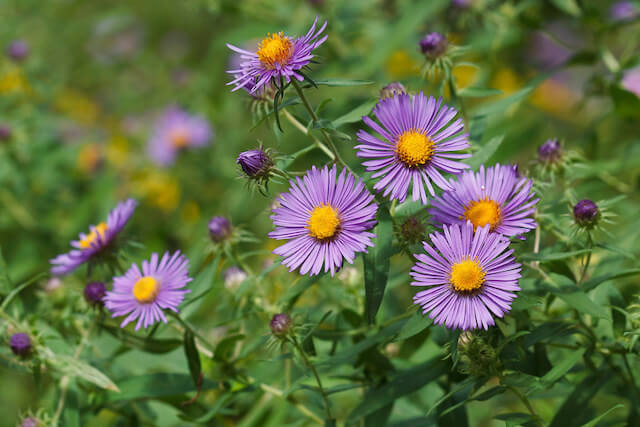
- Perennial Tickseed
Even the poorest soil can support perennial tickseed as long as it drains adequately. Tickseed flourishes in mixed gardens with its thin stems and vibrant yellow-orange flowers.
Make sure to use the full Latin name (Coreopsis lanceolata) when purchasing because there are numerous coreopsis variations.
Native to the area, this species produces blooms from May through July that will attract beneficial insects to your landscape.
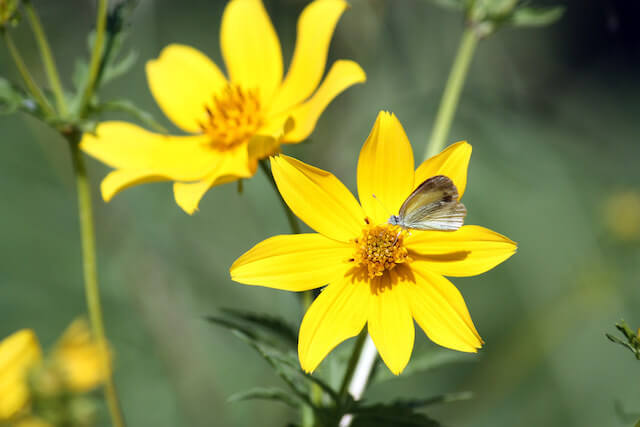
The sound of a fountain
Every terrific landscaping concept for the backyard appeals to all of your senses.
Although you often hear birds tweeting, nothing is nearly as soothing as the sound of water from a fountain.
The fountain dominates your little backyard, but you can make the sections along the yard’s edge pop out with vibrant flowers.
Garden of the Gods
This gorgeous design can bring the gods peace. For a tranquil sound that is suitable for meditation, you might add a small pond with a waterfall.
The surrounding statues lend this design a Greek flavor. You can also add plants and flowers all across the area, which keeps you engaged as you go around.
While certain plants should grow low to the ground, others delightfully blast upward.
This place is a wonderful retreat when you need some peace and quiet. But it also offers a pleasant atmosphere for reuniting with an old friend.
Waterfall ideas
Even while your backyard may already be a place for you to unwind with a good book, you may enrich it even more by including a small waterfall.
So let’s look through our collection of backyard waterfall ideas.
- Turn stairs into waterfalls.
If your backyard has some stairs, you can quickly turn them into a waterfall.
The simplest way is to set up watering cans on each stair. Then, water will drip from the top can to the bottom one.
If you don’t have watering cans, use pots, buckets, or vases instead. But you have to link them using pipes.
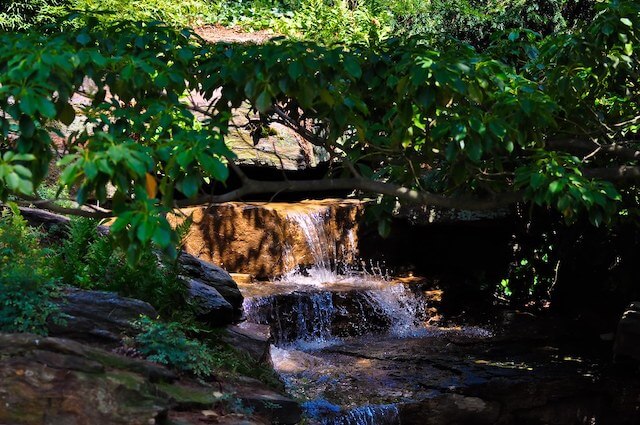
- Take advantage of small spaces
Don’t quit if your backyard is small and already gets stuck with plants; you might be able to find enough space to construct a little waterfall.
You can construct the base of your waterfall by piling some stones up. You must connect a small pump to get the water flowing from the top of the structure.
Then you can sit back and relax with your new waterfall.
- Use musical instrument
If you have an old musical instrument, such as a piano, use it to make a waterfall.
Carry out this project by placing the piano in a dry area of your yard, setting up a water pump on the top, and framing it with evergreens.
- Use the existing water body.
If your yard already has a pond, you may install a waterfall there to make it an even more spectacular waterscape.
There are various methods for doing that. Bricks, stones, and even flower pots can make a unique waterfall pattern.
- Build a trickling waterfall
Waterfalls don’t need to be big, water-carrying constructions. You can create a treat for your ears and eyes while using little water.
For example, build a trickling waterfall using a PVC pipe with several holes in it and a few wooden stakes.
Letting the water enter the pipe will cause it to overflow and drip to the earth through the holes.
- Wine bottles
Wine lovers must be crazy about this idea as it’s super easy to try and looks stunning in your backyard garden.
To allow the water to enter the bottles, you need to drill holes with specialized equipment. You should also have the skills to do it properly.
The outcome is well worth the effort because you can build a unique waterfall by fusing the bottles with stones, pebbles, plant pots, and bits of metal.
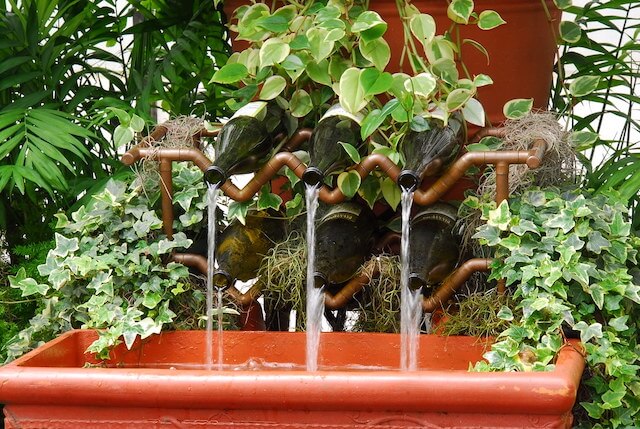
- Build a bamboo waterfall
Bamboo is a type of wood that has long been associated with wisdom and mindfulness.
A bamboo waterfall will undoubtedly work well in a garden that already has an Asian character.
If not, you can still figure out how to incorporate a bamboo garden waterfall into the surroundings.
Start by building a vertical wall with bamboo poles. Then, set them horizontally for the water to drip from the top.
Ensure the poles have had protective treatment so they won’t start to decay immediately.
- A waterfall from the fence
Some gardens have unattractive fences, degrading their beauty. If you have the same problem, solve it quickly by building a waterfall on it.
One of the best ways to achieve this is by connecting some watering cans to your fence at different heights and angles. Then, allow the water to run through as many cans as possible.
You don’t have to install a water pump in this project. This simplicity makes it so beautiful. You can even collect the water to reuse it.
5 Basic Elements of Landscape Design
You can go for any ideas while designing your landscape. Yet, it would be best to incorporate the five key elements.
Then, you will achieve the perfect balance that appeals to all your guests.
Line
You can use lines to control movement along walkways or flowerbeds. They might also draw attention to a decorative item like a pond, a bench, or a fire pit.
Lines come in different patterns and establish different vibes. For example, while the straight patterns form a formal look, the curves suit an informal setup better.
Form
The form here means the shape of the item you put in your backyards, such as the plants or hardscape features.
Plants have various forms, depending on their varieties. You can find the upright, round, or free forms.
Hardscape features share the same features as the plants in terms of forms, as they offer many options. Some of the most common ones are stone paths and pergolas.
The best effect on your landscape should combine different forms harmoniously. For example, if your backyard’s style is formal, you can use structured shrubs.
Color
Color is important in landscape design because it can grab attention. It’s a good idea to use seasons as a theme to play with the colors.
For instance, your summer garden can have vivid plants and flowers. Yet, make sure that there are colors for other seasons, such as holly or evergreens.
Texture
The texture is vital to both hard and soft landscaping. It refers to how solid, flexible, thin, rough, heavy, soft, harsh, silky, etc., a plant or feature is.
You can see the textures on flowers, leaves, and stones. Your garden gains depth if you use multiple hardscapes and plant textures.
Scale
Different widths and heights help the overall composition of the layout. The size of your house, backyard, and other landscape features must also complement and be consistent with the scale of the hardscape and softscape features.
Frequently Asked Questions
1. What is the least expensive ground cover?
You have many options, and we suggest the follows:
- Creeping Periwinkle (about $1.07 per plant)
- Early Snow Glories ($2.40 per plant)
- Moss Phlox ($4.59 per plant)
- Turf ($5.50 per square foot)
2. What can I put in my backyard instead of grass?
Some of the best alternatives to grass for your lawn are:
- Groundcovers (such as creeping jenny, creeping herbs, Asian star jasmine, or Barberry cotoneaster)
- Corsican Mint
- Clover
- Evergreen moss
- Native perennial bed
- Artificial turf
3. How can I make my yard look better in the dirt?
Covering your garden with dirt is the best way to make it look good. If you don’t want to expose the ugly dirt surface, you can try these tips:
- Cover the dirt with grass to form a lawn
- Use a concrete slab to hide the dirt section
- Mulch the area that you want to conceal
- Build a small deck in the area
- Grow plants to establish a centerpiece in your garden
- Lay stones on the surface to make pathways
- Add artificial turf
4. What is the cheapest rock to use for landscaping?
The top cheap rocks for your landscapes and their costs are:
- Crushed Granite ($50 to $70/cubic yard)
- Pea Gravel ($25 to $67/cubic yard)
- River Rocks ($50 to $160/cubic yard)
5. What is the most important thing in landscaping?
The amount of sunlight is a crucial element in any landscape.
You can only choose the right variety of plants to grow in your yard if you know how much sunlight it requires. If you can adapt to the plant’s demand, go for it.
The requirement for sunlight differs from species to species. Some need full sun, about six hours of direct sunlight per day. Meanwhile, others require partial sun.
Conclusion
We have talked about many ideas for designing your backyard landscape. Remember to consider your home style and your own preference to determine the best option.
Now, are you ready for your dream landscape? Let’s grab some plants to transform your garden! Thank you for reading!

